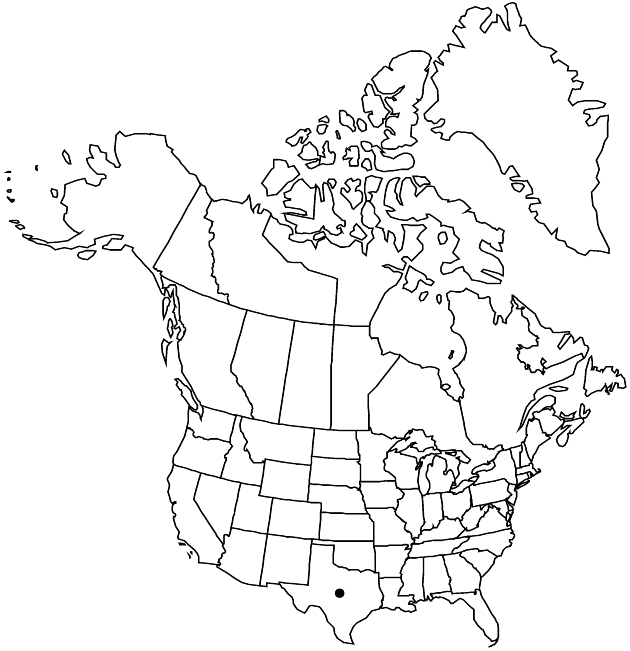Perityle angustifolia
SouthW. Naturalist 4: 204. 1959.
Perennials or subshrubs, 8–35(–70) cm (stems densely leafy); glabrate or puberulent. Leaves: petioles 0–12 mm; blades usually lanceolate, linear, or oblanceolate, rarely ovate, usually 3- or 5-lobed (lobes acute or attenuate; bases cuneate), (5–)15–30 × 2–15 mm, ultimate margins entire, subentire, or laciniate. Heads borne singly or in loose, corymbiform arrays, 5.5–7(–9) × 3.5–5.5(–6) mm. Peduncles 6–50 mm. Involucres narrowly campanulate to campanulate. Phyllaries 12–15, narrowly to broadly lanceolate, 4–5 × 1–2 mm. Ray florets 0. Disc florets 20–33(–50); corollas yellow, tubes 1–1.5 mm, throats narrowly campanulate, 1–1.5 mm, lobes 0.5–1 mm. Cypselae narrowly oblanceolate to linear-oblong, 2–3 mm, margins thin-calloused, puberulent; pappi usually 0, sometimes 1–2 bristles 1.5–2 mm. 2n = 34, ca. 136.
Phenology: Flowering spring–fall.
Habitat: Limestone crevices
Elevation: 300–1300 m
Distribution

Tex.
Discussion
Perityle angustifolia occurs in crevices of Cretaceous limestone in west Texas near the Rio Grande and along the eroded, western edge of the Edwards Plateau.
Selected References
None.